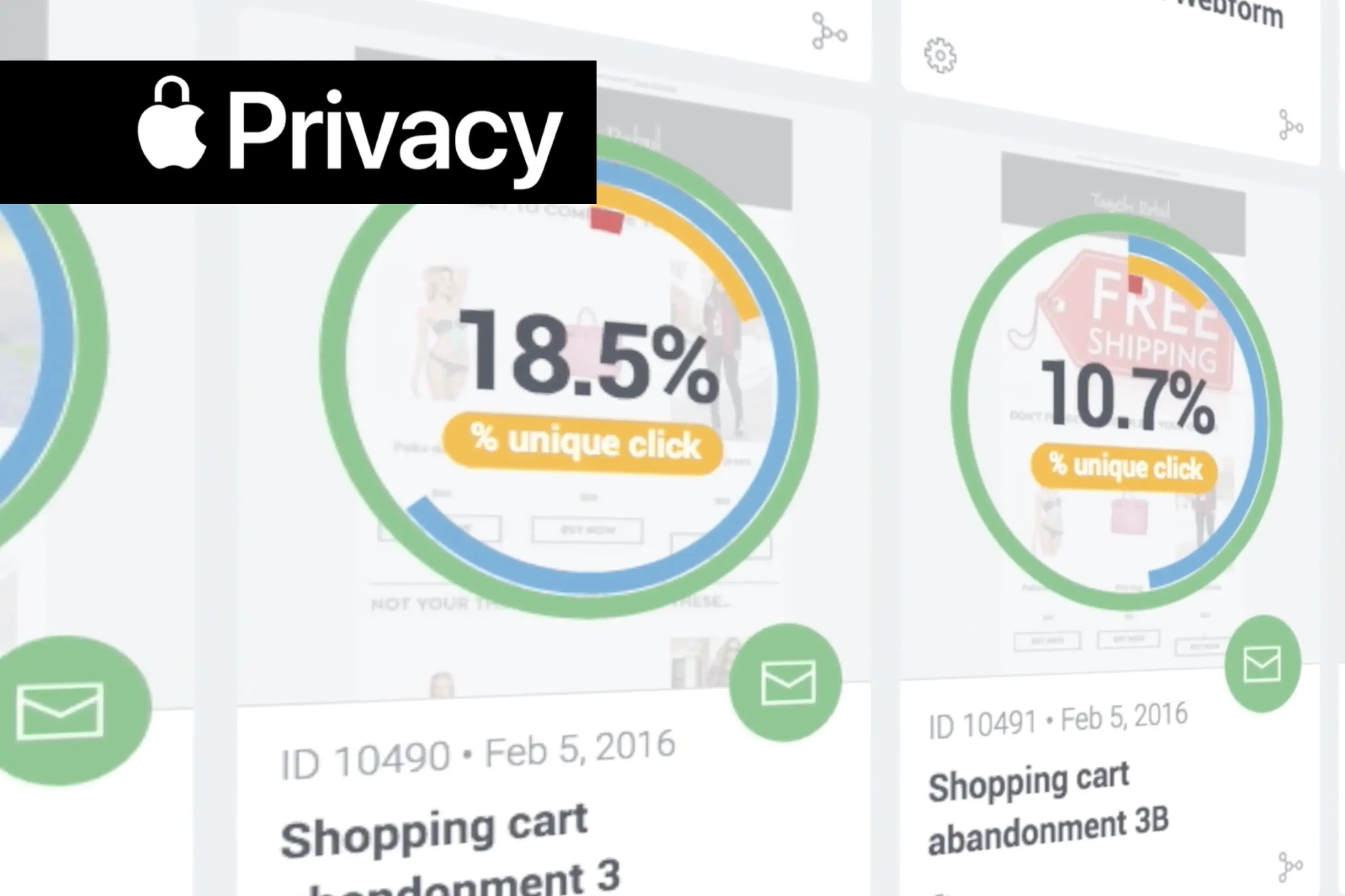Unlocking the competitive advantage of first-party data
Today, data is used to drive decisions in every area of business. This includes branding, marketing, sales, communications, IT, legal, new product development, and operations. The trend over the last decade has been an increasing reliance by business on third-party data advertising for sales growth. However, in this ever evolving digital era, tides change swiftly, and a new generation of first-party data experts are demonstrating why you should invest in 1st party data programs and how these can produce an invaluable asset for business.
Let’s dive in and take a look at the data sources available to your organisation. Then we’ll provide real-life case studies that highlight how and why first-party data can provide you with a sustainable competitive advantage.
Data source categories
Internally managed:
Zero-party data - this is data that a customer intentionally and proactively shares with a brand such as a survey, poll, quiz, or preference centre data. It's soliciting a direct interaction with a customer.
First-party data - this is data that your organization collects from your channels and sources such as website behaviour, email interactions and purchase activity. How you leverage this information can provide both individual consumer and demographic-wide data points.
Externally managed:
Second-party data - this is first-party data that another company collects, packages, and sells to you. This includes Google Affinity Audiences or another business selling their subscriber list or data to you. Scale is an upside of this approach, with the ability to reach a bulk audience who may contain new leads.
Third-party data - similar to that of second-party data however this is aggregated data collected from multiple data sources, that are packaged and sold by a company that did not collect the data itself. Keep in mind the source of the data is often unknown and, like second-party data there is a good chance your competitors may have acquired the same list.

The history of first-party data vs. third-party data
None of the data sources above are new, but each is being leveraged in powerful new ways. The recent trend is to gather digital data from external sources such as websites and apps. Online tracking cookies make this easier than ever and deliver an entirely new range of behavioural insights. Beyond age, gender, marital status, income, occupation, and other general data points, third-party data empowers organisations to gather targeted consumer data.
Low barriers to entry, speed to market along with less internal compliance management has meant that third-party data has become a vital marketing vehicle. Over the last 15 years or so many organisations began to rely on it more than their own internal data.
The third-party data market however is facing serious head winds that have caused many to believe it has a limited life, certainly in its current form.
Adoption as a “table stakes” advertising vehicle means that early mover advantages have now been exhausted and costs have continued to rise as marketers bid up the price of impressions.
Critically, Google has announced its intention to join the list of browser providers who block third party cookies. From 2024, Google Chrome which is estimated to control around 65% of the global browser market, will no longer enable the use of 3rd party cookies. They will instead release an API driven alternative which is currently under development.
Finally, externally managed data sources gathered by 3rd party tracking cookies have created another layer of global consumer privacy and compliance regulations, adding even further to concerns around the long-term viability relying on 3rd party data.
There is however a more powerful alternative that provides longer term value.
Re-focussing effort and investment to first-party data delivers unique insights and far more long-term value, especially since only you have access to these. With these insights being generated directly from your website visitors, social media followers, and existing customer or member activity—you can analyze your data to strategise like never before. It also has the added benefit of displaying compliance and trust, as consumer privacy is maintained by you. Consumers are empowered to “opt-out” of ongoing data collection at any time and your privacy policies are transparent to your customers.
First-party data is an invaluable asset
Most marketers are speaking of a combination of zero- and first-party data when they reference “first-party” data. Also, a combination of second- and third-party data when they reference “third-party” data. In short data they control versus data that someone else controls.
Establishing and operating an internally managed data marketing program definitely requires more effort in terms of acquisition, maintenance and compliance management, than it’s third-party data alternative. However, the investment in managing zero and first-party data produces a valuable business asset that can be leveraged to deliver unique insights which contribute to a company’s ongoing and sustainable competitive advantage.
Zero and First party data combined, empower you to access detailed behavioural and transactional insights that provide you with the ability to:
Personalise marketing to the individual consumer
Re-segment leads by pre-designated triggers
Identify new consumer demographics
Target the right consumers for the right products
Ensure aligned product and service evolution
Inspire new products and services
Reduce marketing costs while increasing revenue
Curate regional marketing strategies
Implement franchise and local area marketing
Ensure transparency and consumer privacy
Design integrated multi-channel marketing
Identify each consumer’s preferred communication method
Perform multi-channel customer journey mapping
Perform customer lifetime value modelling
Generate advanced ROI analysis
And more!
Since the data and related insights are accessible to you and you alone, your competitors won’t know what preferences and behaviours you are leveraging.
Case studies that highlight the power of first-party data
Data is at the heart of what we do at Taguchi. Our proprietary marketing automation platform empowers you to curate first-party data marketing strategies and campaigns. Our process varies greatly from the standard automation approach of “set and forget”. With Taguchi, you can leverage your data in exciting new ways.
"For a variety of reasons, programs once established can stagnate and fail to live up to business' expectations. A successful first party data program is never set and forget." - Dean Maidment, Taguchi Marketing CEO
Here are a few case studies that highlight the competitive advantage we’ve delivered for our clients:
Case Study #1 Research vs. Reality
A clothing retailer’s research conducted via a social media poll found that the demographic for one of their apparel ranges was females ages 20 to 30. Models in their promotions reflected this demographic. After transitioning to Taguchi, utilising over 5 years of transactional history and pairing that with their marketing database, we uncovered that their primary purchasing demographic was women the average age of 42. Also, a significant portion were men in this same age range also, purchasing their products. These findings empowered the retailer to better communicate and market to their slightly older and gender-diverse demographic. Resulting in a more efficient use of funds and improved ROI.
Case Study #2 Clicks Don’t Necessarily Equal Conversions
It’s a long-held belief in digital marketing that more clicks equal more conversions and sales. While targeted clicks matter, so do hard metrics. A multi-product retailer utilised our reporting to determine if they needed to refocus their email marketing on the product categories that generated the most clicks. Their share of voice or “email shelf space” was fairly even across all categories. They were considering increasing prominence to the categories that generated the most clicks.
However, by refocusing on conversion rather than clicks, their Taguchi data showed that the category that generated the least clicks generated the second largest revenue stream from their emails. If the retailer had maximised their email marketing focus for the category that generated the most clicks, they would have lost revenue. Instead, they were able to devise a new segmentation strategy that was unique to them to further maximise sales. In other words, clicks are not always a proxy for sales and don’t always equal the highest ROI or CPA.

Image is for illustrative purposes only.
Case Study #3 Cannibalism Qualms
Retail chains around the globe are closing their brick-and-mortar locations due to more consumers shopping online—right? Not necessarily. While this is certainly the case for some, it is not the case for all. Take the case of a national retailer grappling with a very common issue of channel conflict. Store managers were certain that the companies email marketing was leading more consumers to shop online instead of in-store. Many managers were therefore not always supportive of various digital marketing initiatives which lead to instore acquisition number declining as well as data quality issues at the point of acquisition.
Superficially this opinion seemed to make sense given every time a promotional email was sent, online sales immediately increased. However, through combining both online and instore transaction data as well as developing bespoke attribution models, Taguchi showed that the majority of sales generated from email marketing resulted in in-store purchases. See illustrative diagram below:

*percentages above are approximate for illustrative purposes only.
Taguchi took these learnings a step further and was able to provide store level reporting including benchmarking which led to healthy store competition and re-emphasised the importance of the loyalty program to the retailers.
Whilst the online sales channel is very important, the analysis highlighted that email marketing proved a significant channel for the stores as well. By dispelling an anecdotal myth with data driven facts, new product, and acquisition strategies were able to evolve. Overtime, these types of unique findings help develop a competitive advantage that would never be possible with third-party data.
The Taguchi Spinning Plates Methodology
From our experience, a successful data driven marketer needs to incorporate at least the following 5 key interrelated components into their strategy.Importantly, they need to understand that each of these elements are dynamic and that their influence on the effectiveness of the program constantly changes over time. Like spinning plates, they need to be revisited regularly to ensure they are still performing optimally.

Put simply, does the program or any proposed change:
Comply - do they comply with privacy, spam legislation, company policy?
Acquire - is the program cost effectively adding subscribers, customers, members etc? How are you maintaining quality assurance?
Maintain - what are the movements in the database, is there a regular hygiene process, what about list residency?
Execute - is engagement frequency optimal, is it automating, are we testing?
Reflect - are the right metrics reviewed, what changes are we making as a result?








